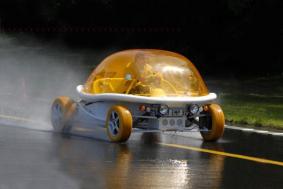
I've written about this before, but here's a recent and intensely poignant
article in Slate reminding us of the evils of large-scale projects with little or no public input.
I'm going to pick up where Jonathan Lethem left off by including the fact that all large scale public housing complexes of the 60's have failed miserably, in part because of their scale. They swallowed hole smaller urban areas, and became monstrosities in reputation and proportion.
At what point are developers' objectives too big? I agree with Mr. Lethem on the fact that if Mr. Gehry had just assigned a Guggenheim for basketball(The New Brooklyn Nets Stadium, which is what was orginally planned,) Brooklyn would have gained a sort of cultural and economical jewel, just like Bilbao did. But greed took over and the project ballooned to points of no return.
Architects don't get paid much money, and the usual reply is "We do it for the love of the work." What do you think is going through Gehry's mind right now? I would go on a limb to say that he does not need the money. So why do this project?
Finally, I must harken to city design in Europe, where incremental, scaled development has been happening for centuries. The centers grow organically, buildings arise and converse with one another, fitting in to their place (modern and historical juxtapostions abound). Once in a while, a grand gesture arises, its impact lessened by research and study. Research and study of ground related activities, of information flows, of infrastructure, of building stock, of population intensities and time-based activities. I don't see that happening here at all. This has "God Complex" written all over it. Maybe if we knew the architects' process, we wouldn't think it were so arbitrary and ill fated.
When Frank Gehry offers the crown jewel of a 16 tower mega development, and calls it "Miss Brooklyn" after a wedding he saw in Brooklyn once, I wonder a) how many drugs he did in the 60's, b) should we consider that he really does design by crumpling up pieces of paper, and c) what kind of incentives is Bruce Ratner really offering?












